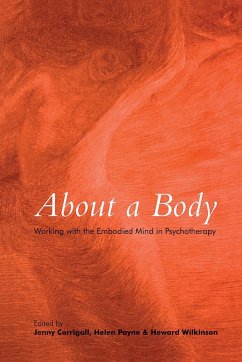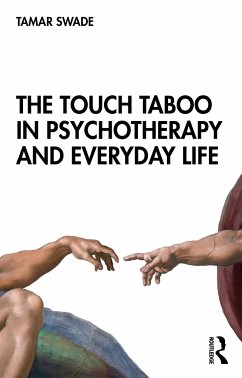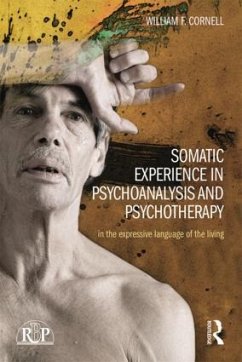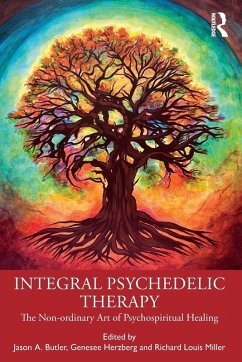
Physical Touch in Psychoanalytic Psychotherapy
Transforming Trauma through Embodied Practice
Versandkostenfrei!
Versandfertig in 6-10 Tagen
36,99 €
inkl. MwSt.
Weitere Ausgaben:

PAYBACK Punkte
18 °P sammeln!
This groundbreaking book presents a new model for incorporating the human body, and specifically physical touch, into psychoanalysis and psychotherapy, particularly for patients who have experienced trauma.Novak's model of informed and disciplined touch articulates five categories of touch and three phases of therapeutic body work, all of which can help move the patient and therapist directly into bodily experiences that enable trauma memories to be processed, and then analyzed and transformed. This transformation leads to patients experiencing their bodies in fundamentally new ways, both rela...
This groundbreaking book presents a new model for incorporating the human body, and specifically physical touch, into psychoanalysis and psychotherapy, particularly for patients who have experienced trauma.
Novak's model of informed and disciplined touch articulates five categories of touch and three phases of therapeutic body work, all of which can help move the patient and therapist directly into bodily experiences that enable trauma memories to be processed, and then analyzed and transformed. This transformation leads to patients experiencing their bodies in fundamentally new ways, both relationally and intrapsychically. The book also grapples with the risks and ethics of working directly with patients' bodies, outlining theoretical and clinical elements that help create a safe and sacred therapeutic structure. Novak's model offers a continuum of touch from everyday physical interactions, such as handshakes or hugs, to more complex and complete ways of working withthe body that are safe and meaningful and that create an integrated experience of the patient's mind and body.
Physical Touch in Psychoanalytic Psychotherapy is of interest to therapists at all levels of experience in the fields of counseling, social work, psychotherapy, and psychoanalysis. Practitioners in other helping professions such as healthcare, massage therapy, and physical therapy, as well as providers of wholistic medicine, will also be able to make use of the comprehensive clinical model and case studies detailed in the book.
Novak's model of informed and disciplined touch articulates five categories of touch and three phases of therapeutic body work, all of which can help move the patient and therapist directly into bodily experiences that enable trauma memories to be processed, and then analyzed and transformed. This transformation leads to patients experiencing their bodies in fundamentally new ways, both relationally and intrapsychically. The book also grapples with the risks and ethics of working directly with patients' bodies, outlining theoretical and clinical elements that help create a safe and sacred therapeutic structure. Novak's model offers a continuum of touch from everyday physical interactions, such as handshakes or hugs, to more complex and complete ways of working withthe body that are safe and meaningful and that create an integrated experience of the patient's mind and body.
Physical Touch in Psychoanalytic Psychotherapy is of interest to therapists at all levels of experience in the fields of counseling, social work, psychotherapy, and psychoanalysis. Practitioners in other helping professions such as healthcare, massage therapy, and physical therapy, as well as providers of wholistic medicine, will also be able to make use of the comprehensive clinical model and case studies detailed in the book.














